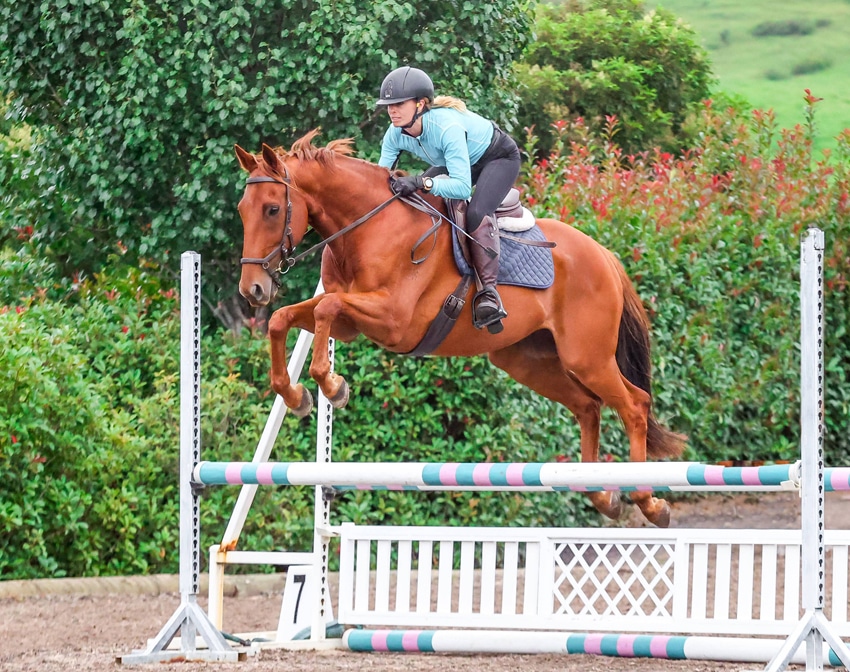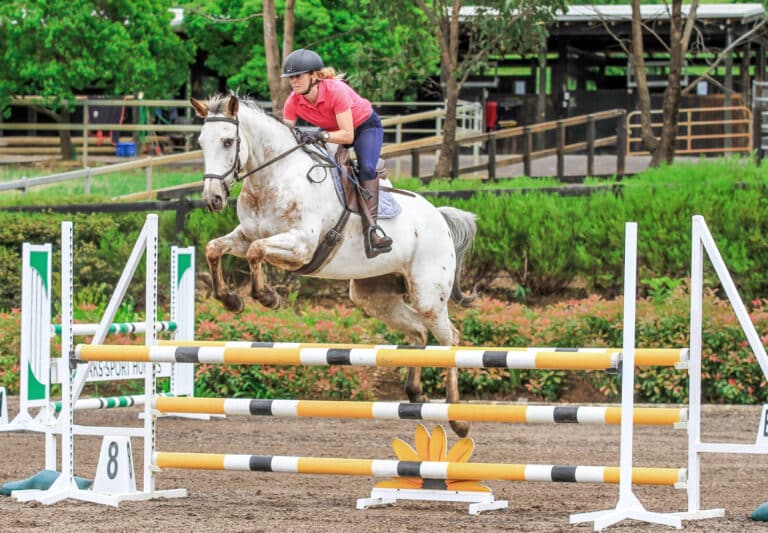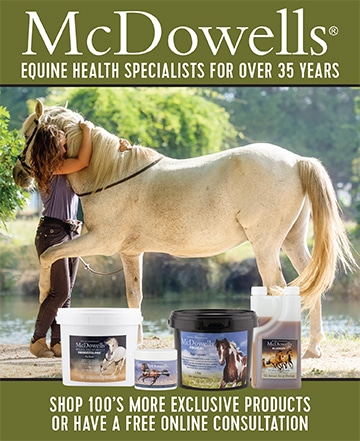Ninety per cent of show jumping is flat work, so if you want to be truly successful in the ring, putting time in on the flat is critical, writes CHRISTINE ARMISHAW.
To hit the mark in the jumping ring, flat work is your friend. And the good news is you can school on the flat frequently without potentially impacting your horses legs the way you might if you were to jump too often, and still improve your jumping overall.
When it comes to jumping, your three main jobs are to manage your horse’s straightness, have adjustability of your horse’s pace, and maintain a good rider position. Once you’ve mastered these, the rest is up to your horse.
So, let’s take a look at two dressage exercises to improve straightness and adjustability.
Straightness
Interestingly, horses are naturally not very straight. To improve straightness, first you need to be able to manoeuver your horse’s shoulders. A common mistake when trying to get straight is to pull a rein and move the horse’s head one way or the other. But the shoulders won’t always follow the head, which is what’s happening when you feel your horse falling in or falling out. Instead, focus on moving the shoulders, because they’re attached to the forelegs.
Exercise 1: Moving the shoulders
Head off in a walk and practise doing turns anywhere you like but, rather than using your reins independently, keep your hands at bit-width distance so that when you move one rein the other moves too. This means that while one rein is pulling in the direction of the turn (direct rein), the other is pushing against the neck (indirect rein).
To start with, your horse may not grasp this concept, so use a dressage whip in your outside hand to either press against or lightly tap the shoulder in order to help shift the shoulders across without simply overbending the neck. When you get it right, it will feel almost as if the horse is pivoting underneath you, as the weight has been shifted off the forehand and more onto the hindquarters. Once you have mastered moving the shoulders in a walk, try in trot, then eventually in canter.
When you can effectively move your horse’s shoulders you have the ability to bring them back to straight when crooked, or to turn more effectively, without the horse falling in or out. Both results are invaluable when lining up to a fence or turning to the next jump on course.
Adjustability
Being able to ask your horse to either wait or move up to a fence to find the perfect distance all comes down to how adjustable the canter is (the pace we most commonly jump from).
Exercise 2: Adjusting the canter
Pick two points – let’s call them A and B – in your riding area. In a working canter, the moment you past Point A count aloud the number of canter strides it takes to pass Point B. This is your baseline. Now your goal is to either fit more or less strides into that same space.
To fit more strides in, you need to slow the tempo; your horse needs to cover less ground with each stride. In canter, this is easiest done when the horse has their hooves off the ground in the suspended phase of the stride. Set yourself up by taking a big breath in for one stride, then at the beginning of the next stride close your hands on the reins, shift your body weight back on a slight curve, tilt your pelvis underneath you and, tensing up through your core, physically try to rock your horse’s weight back onto their hindquarters. This takes at least two whole canter strides to complete, first with the breath to set it up and then for the ask. Expect to repeat the process for several canter strides in a row to effectively shorten the stride.
To get forward, soften your contact on the rein and put your leg on, keeping it there until your horse increases their tempo. You want your horse to stretch out and cover more ground with each stride so it takes fewer strides to get from Point A to B. Once you get your horse more forward you may find it tricky to get back to your original baseline. However, this simply highlights the need for practise. On course, horses will often become a bit spicier, so training with dressage techniques like this make it easier to bring them back to you in order to set them up for the next fence.

Final thoughts
Mastering these dressage exercises will set you on the path to having a more rideable horse in the jumping ring. You can practise them often, without the concern for your horse’s legs associated with jumping too frequently. When done right, the joy found in perfecting these movements on the flat can really help you level up as a rider, which to me, is the ultimate goal.
Check out the videos for each of these exercises and nail your next training.
Main image: Being able to ask your horse to either wait or move up to a fence to find the perfect distance all comes down to how adjustable the canter is (Image by Mel Goodson, Elegant Exposures).


